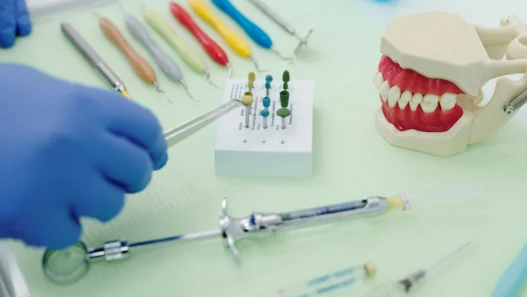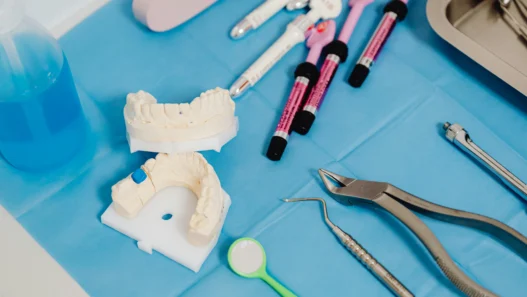Fever is a common response of the body to infections, and in most cases, it is not a cause for concern. However, when a child develops a high fever, parents and caregivers often worry about whether medical intervention is necessary. Understanding when a fever is too high for a child and what steps to take can help ensure their health and safety.
Understanding Fever in Children
A fever is defined as a body temperature above the normal range of 98.6°F (37°C). For children, a fever is generally considered to be a temperature of 100.4°F (38°C) or higher. The body’s immune system raises the temperature to help fight off infections caused by viruses, bacteria, or other pathogens. While a mild fever can often be managed at home, a high fever may require medical attention.
The severity of a fever is classified as follows:
- Low-grade fever: 100.4°F to 102°F (38°C to 38.9°C)
- Moderate fever: 102°F to 104°F (38.9°C to 40°C)
- High fever: 104°F to 106°F (40°C to 41.1°C)
- Dangerously high fever: Above 106°F (41.1°C)
While most fevers in children are not dangerous, persistent or extremely high fevers can indicate a more serious condition that requires immediate medical evaluation.
Causes of Fever in Children
Fever in children can be caused by a variety of factors, including infections, inflammatory conditions, immunizations, or overheating. Some common causes include:
- Viral Infections: Fevers caused by viruses, such as the flu, colds, or roseola, are usually mild and resolve on their own within a few days.
- Bacterial Infections: Strep throat, urinary tract infections, ear infections, and pneumonia can cause fevers that may require antibiotics for treatment.
- Teething: Mild fevers can occur during teething but are typically not higher than 101°F (38.3°C).
- Vaccinations: Some children develop mild fevers after receiving routine immunizations as their immune system responds to the vaccine.
- Overheating: Dressing a child too warmly or exposure to high temperatures can raise body temperature, though this is not typically classified as a fever.
When is a Fever Too High for a Child?
A fever is considered too high when it reaches levels that pose a risk of serious complications, such as seizures, dehydration, or organ damage. The following guidelines can help determine when a fever requires medical attention:
- Infants Under 3 Months: A rectal temperature of 100.4°F (38°C) or higher in a newborn should always be evaluated by a doctor immediately, as their immune systems are not fully developed.
- Infants 3 to 6 Months: A fever above 101°F (38.3°C) in this age group should prompt a call to a healthcare provider, especially if the child appears lethargic or irritable.
- Children 6 Months to 2 Years: A fever above 102°F (38.9°C) that lasts more than 24 hours should be assessed by a doctor.
- Children Over 2 Years: A fever above 104°F (40°C) that does not respond to fever-reducing medications or persists for more than three days should be evaluated by a doctor.
Warning Signs That Require Immediate Medical Attention
Parents should seek emergency medical care if a child with a fever exhibits any of the following symptoms:
- Difficulty breathing or rapid breathing
- Seizures or convulsions (febrile seizures)
- Persistent vomiting or refusal to drink fluids, leading to dehydration
- Severe headache, stiff neck, or confusion
- Skin rash that does not fade when pressed
- Blue or grayish skin, lips, or fingernails
- Extreme drowsiness or difficulty waking up
Febrile seizures, which occur in some children between the ages of 6 months and 5 years, can be frightening but are usually harmless. However, if a seizure lasts longer than five minutes or if the child has difficulty recovering, emergency medical assistance should be sought.
How to Manage a Child’s Fever at Home
If a child’s fever is mild and they are otherwise alert and active, parents can manage the fever at home using simple remedies. The following steps can help reduce fever and provide comfort:
- Ensure Hydration: Offer plenty of fluids, such as water, electrolyte solutions, broth, or diluted fruit juices, to prevent dehydration.
- Dress Lightly: Avoid heavy clothing or blankets, as overheating can worsen the fever.
- Provide a Lukewarm Bath: A sponge bath with lukewarm water can help lower body temperature. Cold baths or ice packs should be avoided as they can cause shivering and raise the temperature further.
- Use Fever-Reducing Medications: Acetaminophen (Tylenol) or ibuprofen (Advil, Motrin) can help bring down fever and relieve discomfort. Aspirin should not be given to children due to the risk of Reye’s syndrome.
- Allow Rest: Encourage rest and quiet activities to help the body fight off the infection.
When to Call a Doctor
Parents should consult a doctor if a fever is accompanied by other concerning symptoms, such as:
- Fever lasting more than three days without improvement
- Persistent vomiting, diarrhea, or refusal to eat
- Severe pain, such as ear pain or abdominal pain
- Worsening symptoms despite fever-reducing medication
- Recent exposure to someone with a contagious illness, such as COVID-19 or the flu
Preventing Fevers in Children
While it is impossible to prevent all fevers, certain steps can reduce the likelihood of infections that cause high fevers:
- Practicing good hygiene, including frequent handwashing
- Ensuring children are up to date on vaccinations
- Keeping children away from individuals with contagious illnesses
- Encouraging a balanced diet and adequate sleep to support immune function
- Dressing appropriately for weather conditions to prevent overheating
Conclusion
Fever is a normal part of the body’s immune response, but knowing when a fever is too high for a child is essential for ensuring their health and well-being. In most cases, mild to moderate fevers can be managed at home, but extremely high fevers or fevers accompanied by concerning symptoms require medical attention. By monitoring the child’s temperature, ensuring proper hydration, and recognizing warning signs, parents can confidently care for their child and seek medical help when necessary. If there is ever uncertainty about a child’s condition, consulting a healthcare professional is always the best course of action to ensure their safety.















